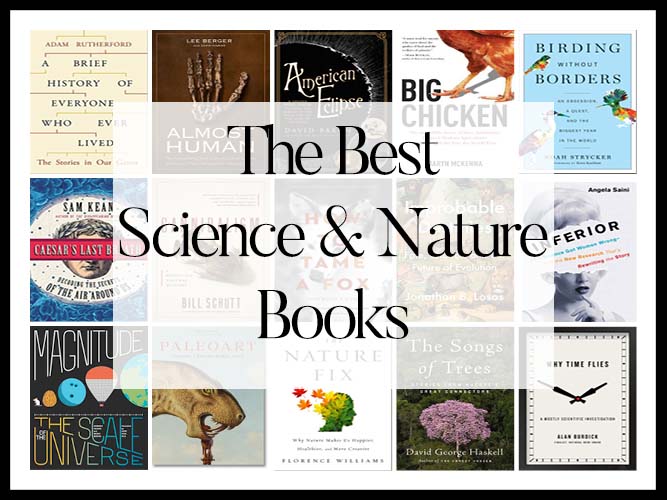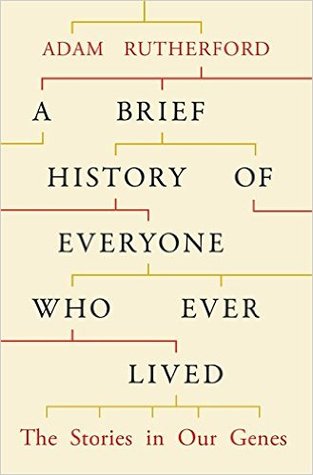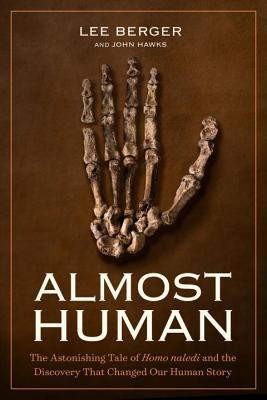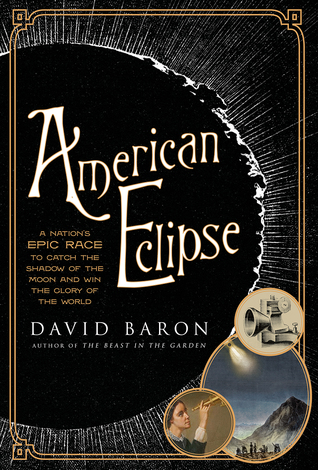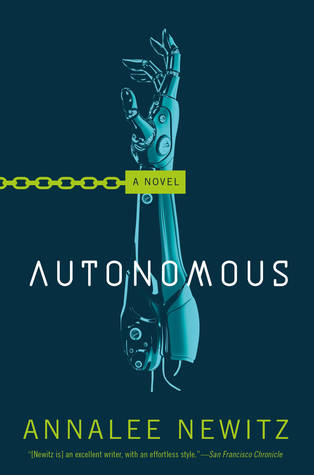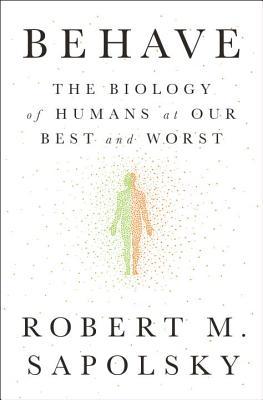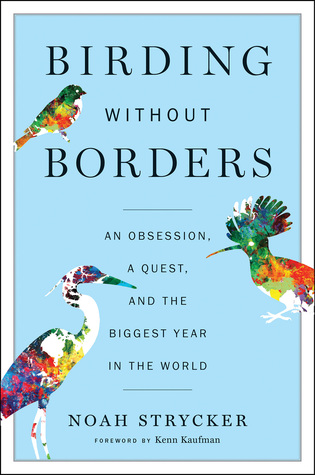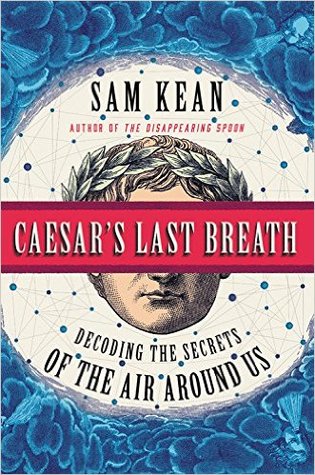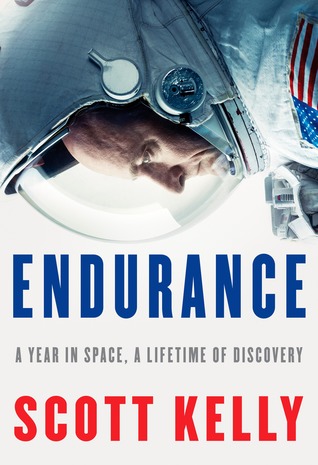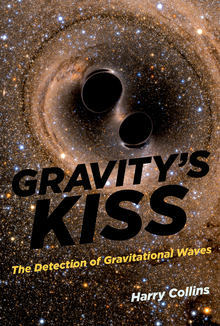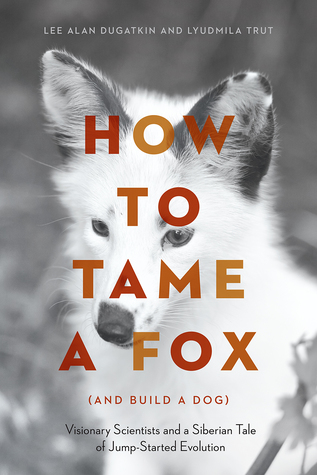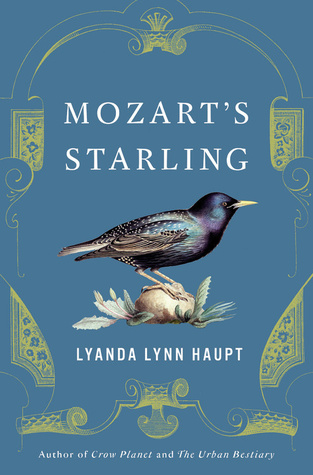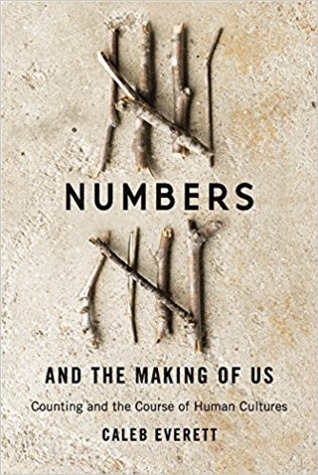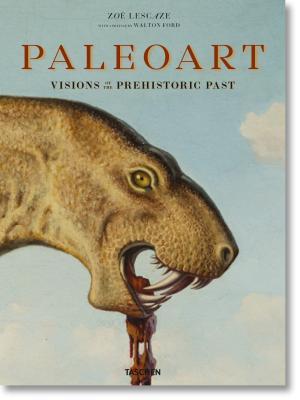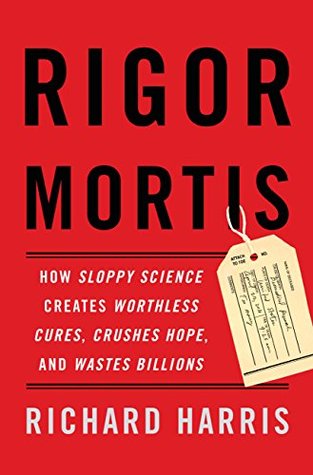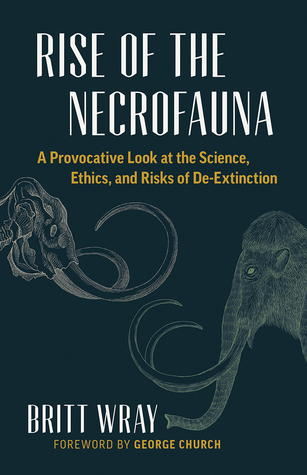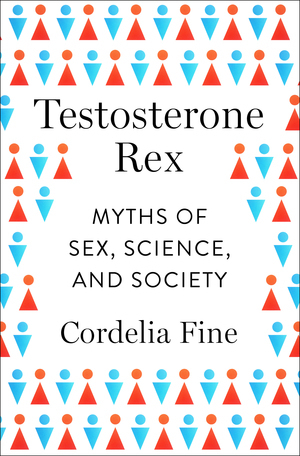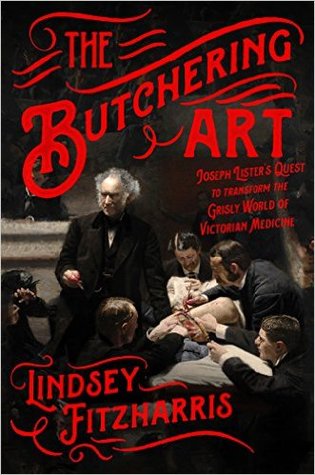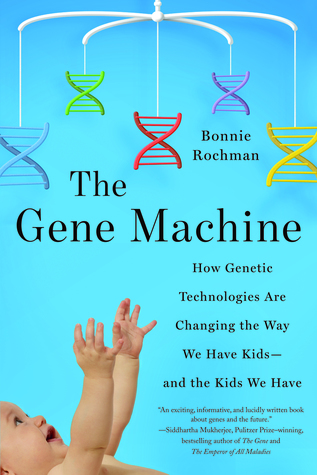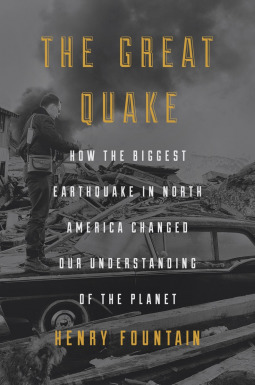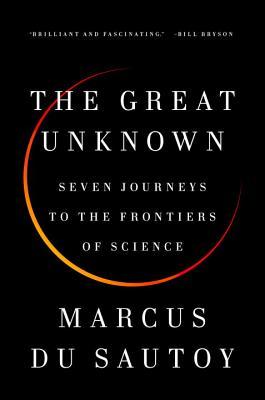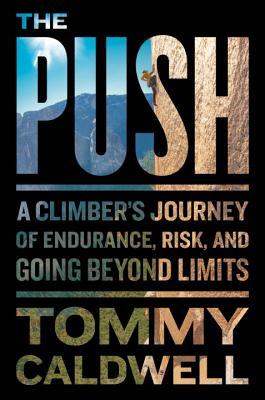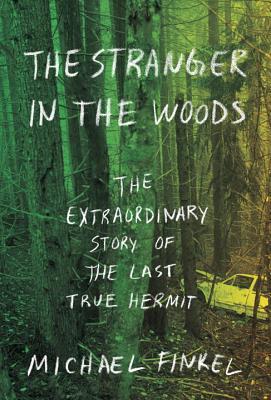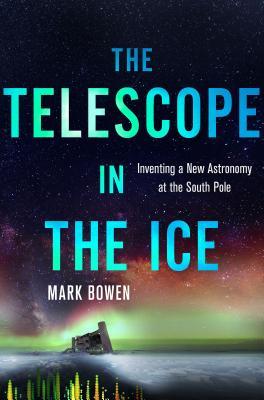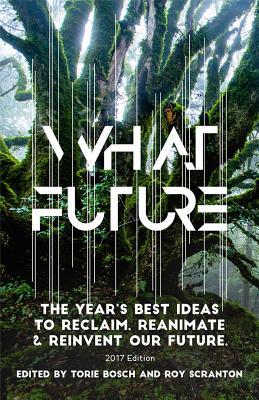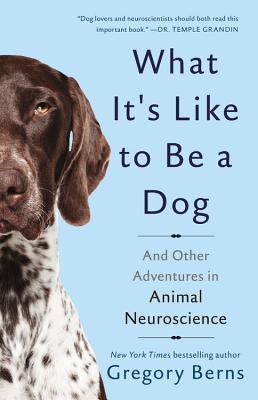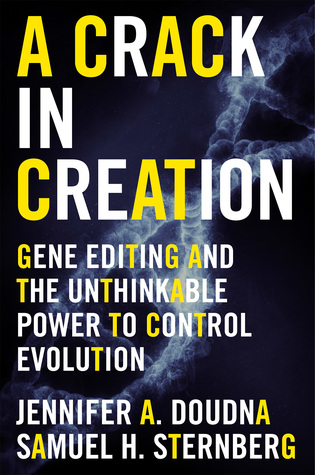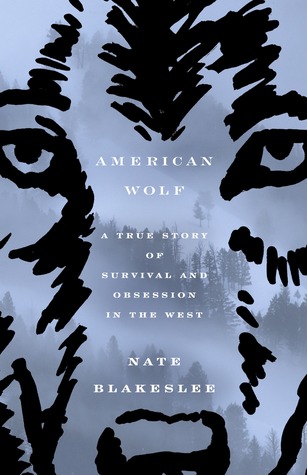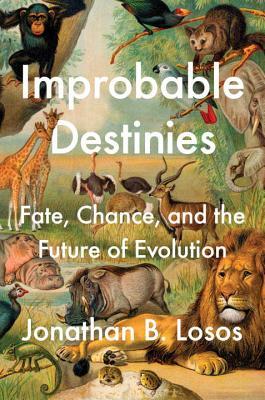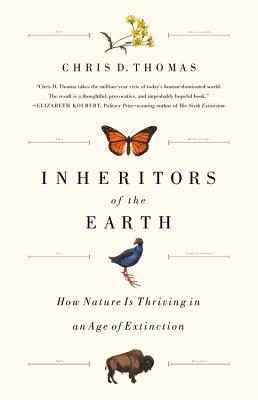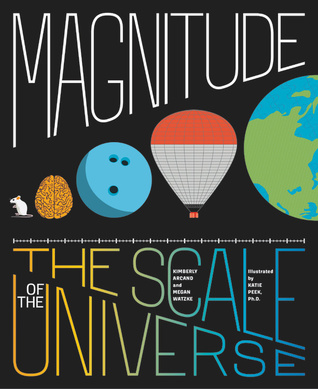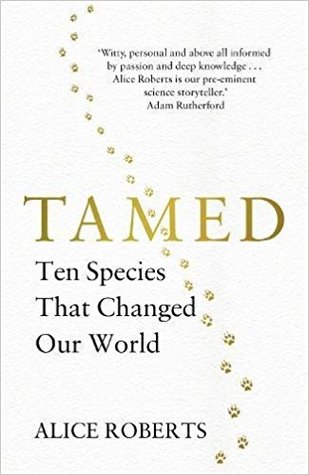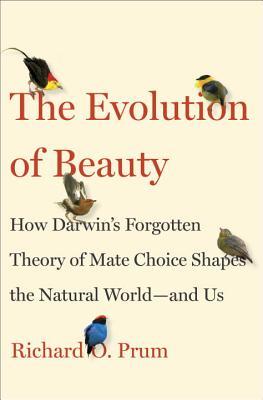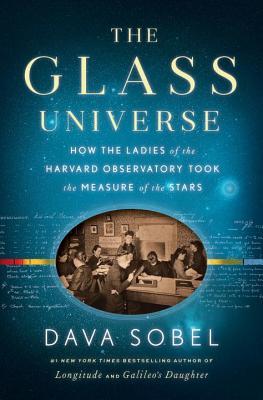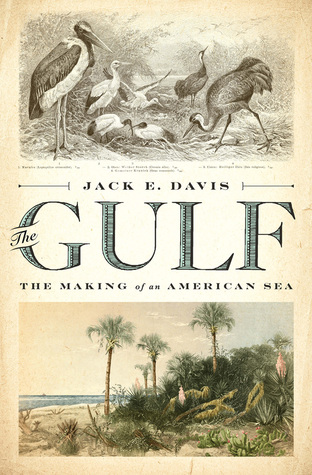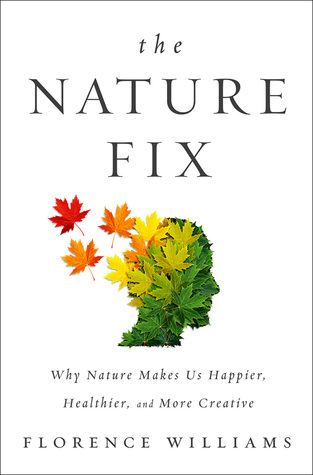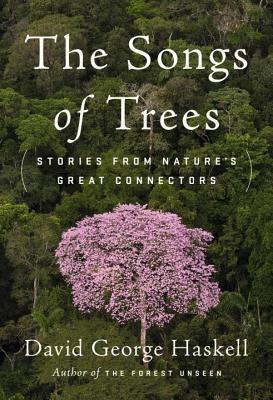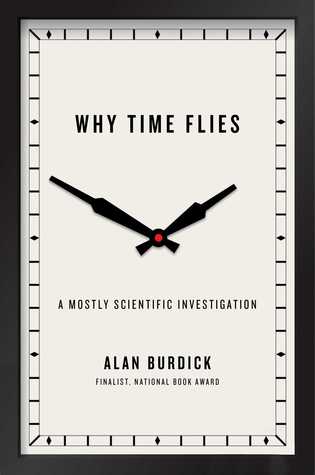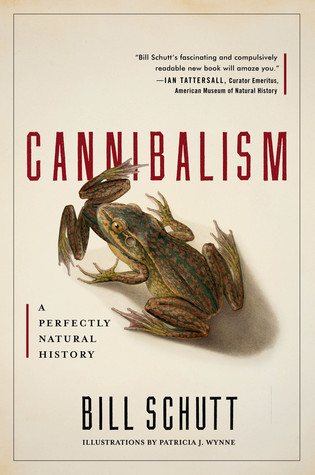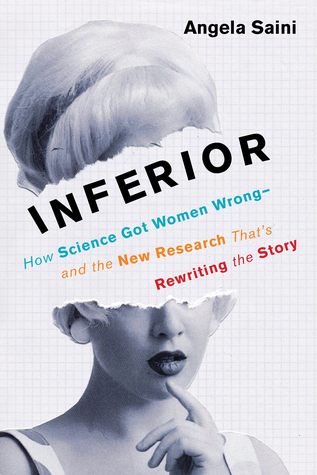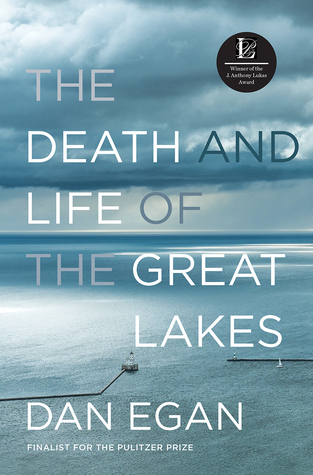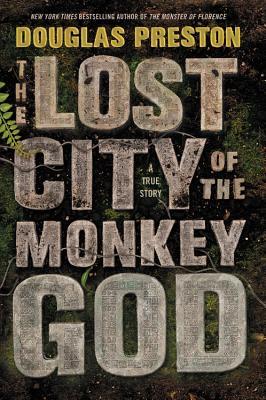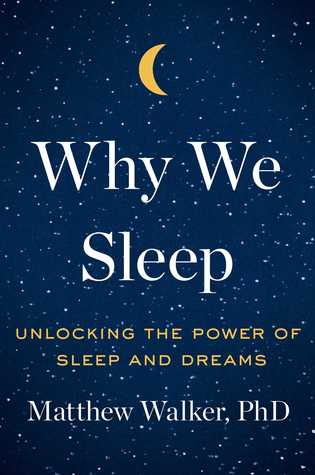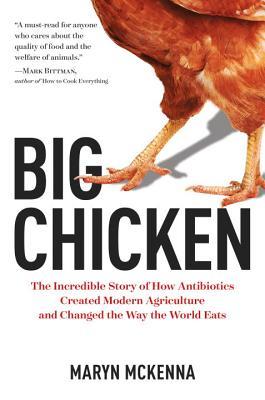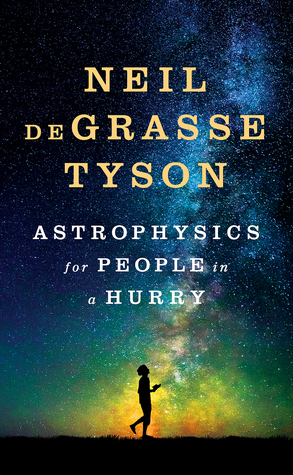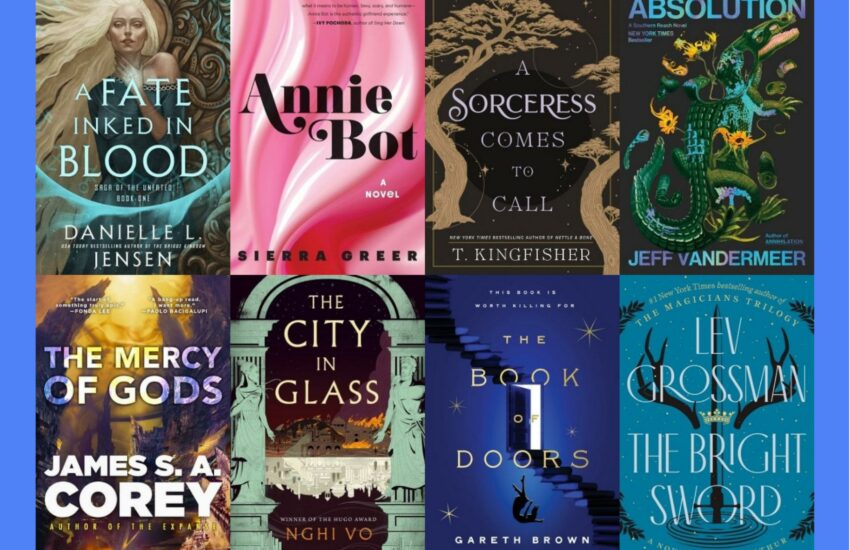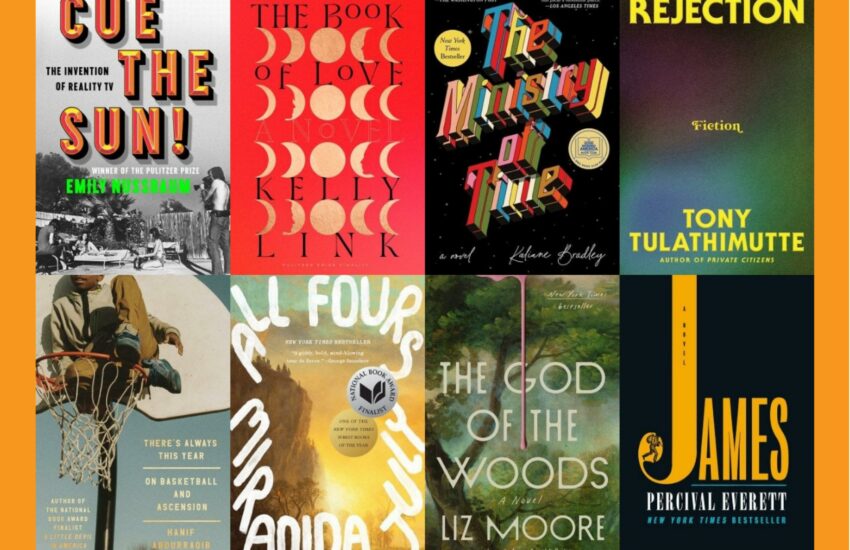The Best Science & Nature Books of 2017 (A Year-End List Aggregation)
“What are the best Science & Nature books of 2017?” We aggregated 38 year-end lists and ranked the 274 unique titles by how many times they appeared in an attempt to answer that very question!
There are thousands of year-end lists released every year and like we do in our weekly Best Book articles, we wanted to see which books appear the most. The top 46 books, all of which appeared on 2 or more best Nature & Science lists, are ranked below with images, summaries, and links for more information or to purchase. The remaining 200+ books, as well as the top book lists, are at the bottom of the page.
Make sure to take a look at our other Best of 2017 book lists:
- The Best Fiction Books of 2017
- The Best Nonfiction Books of 2017
- The Best Science Fiction & Fantasy Books of 2017
- The Best Cookbooks of 2017
- The Best Graphic Novels & Comics Books of 2017
- The Best Art & Photography & Coffee Table Books of 2017
- The Best Books All Categories of 2017
- The Best Biography & Memoir Books of 2017
- The Best Poetry Books of 2017
- The Best History Books of 2017
- The Best Children’s Books of 2017
- The Best Audiobooks of 2017
You can also take a look at our Best Science/Nature books from last year as well as all the other Best 2016 articles!
Happy Scrolling!
Top 46 Science & Nature Books Of 2017
46 .) A Brief History of Everyone Who Ever Lived: The Human Story Retold Through Our Genes by Adam Rutherford and Siddhartha Mukherjee
Lists It Appears On:
- Amazon
- National Geographic
“In our unique genomes, every one of us carries the story of our species—births, deaths, disease, war, famine, migration, and a lot of sex.
But those stories have always been locked away—until now.
Who are our ancestors? Where did they come from? Geneticists have suddenly become historians, and the hard evidence in our DNA has blown the lid off what we thought we knew. Acclaimed science writer Adam Rutherford explains exactly how genomics is completely rewriting the human story—from 100,000 years ago to the present.
A Brief History of Everyone Who Ever Lived will upend your thinking on Neanderthals, evolution, royalty, race, and even redheads. (For example, we now know that at least four human species once roamed the earth.) Plus, here is the remarkable, controversial story of how our genes made their way to the Americas—one that’s still being written, as ever more of us have our DNA sequenced.”
45 .) Almost Human: The Astonishing Tale of Homo naledi and the Discovery That Changed Our Human Story by Lee Berger and John Hawks
Lists It Appears On:
- Amazon
- National Geographic
In 2013, Berger, a National Geographic Explorer-in-Residence, caught wind of a cache of bones in a hard-to-reach underground cave in South Africa. He put out a call around the world for petite collaborators—men and women small and adventurous enough to be able to squeeze through 8-inch tunnels to reach a sunless cave 40 feet underground. With this team of “underground astronauts,” Berger made the discovery of a lifetime: hundreds of prehistoric bones, including entire skeletons of at least 15 individuals, all perhaps two million years old. Their features combined those of known prehominids like Lucy, the famous Australopithecus, with those more human than anything ever before seen in prehistoric remains. Berger’s team had discovered an all new species, and they called it Homo naledi.
44 .) American Eclipse: A Nation’s Epic Race to Catch the Shadow of the Moon and Win the Glory of the World by David Baron
Lists It Appears On:
- Amazon
- Forbes
“On a scorching July afternoon in 1878, at the dawn of the Gilded Age, the moon’s shadow descended on the American West, darkening skies from Montana Territory to Texas. This rare celestial event―a total solar eclipse―offered a priceless opportunity to solve some of the solar system’s most enduring riddles, and it prompted a clutch of enterprising scientists to brave the wild frontier in a grueling race to the Rocky Mountains. Acclaimed science journalist David Baron, long fascinated by eclipses, re-creates this epic tale of ambition, failure, and glory in a narrative that reveals as much about the historical trajectory of a striving young nation as it does about those scant three minutes when the blue sky blackened and stars appeared in mid-afternoon.
In vibrant historical detail, American Eclipse animates the fierce jockeying that came to dominate late nineteenth-century American astronomy, bringing to life the challenges faced by three of the most determined eclipse chasers who participated in this adventure. James Craig Watson, virtually forgotten in the twenty-first century, was in his day a renowned asteroid hunter who fantasized about becoming a Gilded Age Galileo. Hauling a telescope, a star chart, and his long-suffering wife out west, Watson believed that he would discover Vulcan, a hypothesized “”intra-Mercurial”” planet hidden in the sun’s brilliance. No less determined was Vassar astronomer Maria Mitchell, who―in an era when women’s education came under fierce attack―fought to demonstrate that science and higher learning were not anathema to femininity. Despite obstacles erected by the male-dominated astronomical community, an indifferent government, and careless porters, Mitchell courageously charged west with a contingent of female students intent on observing the transcendent phenomenon for themselves. Finally, Thomas Edison―a young inventor and irrepressible showman―braved the wilderness to prove himself to the scientific community. Armed with his newest invention, the tasimeter, and pursued at each stop by throngs of reporters, Edison sought to leverage the eclipse to cement his place in history. What he learned on the frontier, in fact, would help him illuminate the world.”
43 .) Apollo 8: The Thrilling Story of the First Mission to the Moon by Jeffrey Kluger
Lists It Appears On:
- Amazon
- Forbes
“In August 1968, NASA made a bold decision: in just sixteen weeks, the United States would launch humankind’s first flight to the moon. Only the year before, three astronauts had burned to death in their spacecraft, and since then the Apollo program had suffered one setback after another. Meanwhile, the Russians were winning the space race, the Cold War was getting hotter by the month, and President Kennedy’s promise to put a man on the moon by the end of the decade seemed sure to be broken. But when Frank Borman, Jim Lovell and Bill Anders were summoned to a secret meeting and told of the dangerous mission, they instantly signed on.
Written with all the color and verve of the best narrative non-fiction, Apollo 8 takes us from Mission Control to the astronaut’s homes, from the test labs to the launch pad. The race to prepare an untested rocket for an unprecedented journey paves the way for the hair-raising trip to the moon. Then, on Christmas Eve, a nation that has suffered a horrendous year of assassinations and war is heartened by an inspiring message from the trio of astronauts in lunar orbit. And when the mission is over―after the first view of the far side of the moon, the first earth-rise, and the first re-entry through the earth’s atmosphere following a flight to deep space―the impossible dream of walking on the moon suddenly seems within reach.”
42 .) Autonomous by Annalee Newitz
Lists It Appears On:
- Geek Wire
- NPR Books
“When anything can be owned, how can we be free
Earth, 2144. Jack is an anti-patent scientist turned drug pirate, traversing the world in a submarine as a pharmaceutical Robin Hood, fabricating cheap scrips for poor people who can’t otherwise afford them. But her latest drug hack has left a trail of lethal overdoses as people become addicted to their work, doing repetitive tasks until they become unsafe or insane.
Hot on her trail, an unlikely pair: Eliasz, a brooding military agent, and his robotic partner, Paladin. As they race to stop information about the sinister origins of Jack’s drug from getting out, they begin to form an uncommonly close bond that neither of them fully understand.
“
41 .) Behave: The Biology of Humans at Our Best and Worst by Robert M. Sapolsky
Lists It Appears On:
- Barnes & Noble
- Greater Good Magazine
“From the celebrated neurobiologist and primatologist, a landmark, genre-defining examination of human behavior, both good and bad, and an answer to the question: Why do we do the things we do?
Sapolsky’s storytelling concept is delightful but it also has a powerful intrinsic logic: he starts by looking at the factors that bear on a person’s reaction in the precise moment a behavior occurs, and then hops back in time from there, in stages, ultimately ending up at the deep history of our species and its evolutionary legacy.
And so the first category of explanation is the neurobiological one. A behavior occurs–whether an example of humans at our best, worst, or somewhere in between. What went on in a person’s brain a second before the behavior happened? Then Sapolsky pulls out to a slightly larger field of vision, a little earlier in time: What sight, sound, or smell caused the nervous system to produce that behavior? And then, what hormones acted hours to days earlier to change how responsive that individual is to the stimuli that triggered the nervous system? By now he has increased our field of vision so that we are thinking about neurobiology and the sensory world of our environment and endocrinology in trying to explain what happened.”
40 .) Birding Without Borders by Noah Strycker
Lists It Appears On:
- Birds & Blooms
- Multnomah County
“In 2015, Noah Strycker set himself a lofty goal: to become the first person to see half the world’s birds in one year. For 365 days, with a backpack, binoculars, and a series of one-way tickets, he traveled across forty-one countries and all seven continents, eventually spotting 6,042 species—by far the biggest birding year on record.
This is no travelogue or glorified checklist. Noah ventures deep into a world of blood-sucking leeches, chronic sleep deprivation, airline snafus, breakdowns, mudslides, floods, war zones, ecologic devastation, conservation triumphs, common and iconic species, and scores of passionate bird lovers around the globe. By pursuing the freest creatures on the planet, Noah gains a unique perspective on the world they share with us—and offers a hopeful message that even as many birds face an uncertain future, more people than ever are working to protect them. “
39 .) Caesar’s Last Breath by Sam Kean
Lists It Appears On:
- Science News
- The Guardian 2
“It’s invisible. It’s ever-present. Without it, you would die in minutes. And it has an epic story to tell.
In Caesar’s Last Breath, New York Times bestselling author Sam Kean takes us on a journey through the periodic table, around the globe, and across time to tell the story of the air we breathe, which, it turns out, is also the story of earth and our existence on it.
With every breath, you literally inhale the history of the world. On the ides of March, 44 BC, Julius Caesar died of stab wounds on the Senate floor, but the story of his last breath is still unfolding; in fact, you’re probably inhaling some of it now. Of the sextillions of molecules entering or leaving your lungs at this moment, some might well bear traces of Cleopatra’s perfumes, German mustard gas, particles exhaled by dinosaurs or emitted by atomic bombs, even remnants of stardust from the universe’s creation.”
38 .) Endurance: A Year in Space, A Lifetime of Discovery by Scott Kelly
Lists It Appears On:
- Barnes & Noble
- Forbes
The veteran of four spaceflights and the American record holder for consecutive days spent in space, Scott Kelly has experienced things very few have. Now, he takes us inside a sphere utterly hostile to human life. He describes navigating the extreme challenge of long-term spaceflight, both life-threatening and mundane: the devastating effects on the body; the isolation from everyone he loves and the comforts of Earth; the catastrophic risks of colliding with space junk; and the still more haunting threat of being unable to help should tragedy strike at home–an agonizing situation Kelly faced when, on a previous mission, his twin brother’s wife, American Congresswoman Gabrielle Giffords, was shot while he still had two months in space.
37 .) Gravity’s Kiss: The Detection of Gravitational Waves
Lists It Appears On:
- Lifeboat Foundation
- Smithsonian
“Scientists have been trying to confirm the existence of gravitational waves for fifty years. Then, in September 2015, came a “”very interesting event”” (as the cautious subject line in a physicist’s email read) that proved to be the first detection of gravitational waves. In Gravity’s Kiss, Harry Collins — who has been watching the science of gravitational wave detection for forty-three of those fifty years and has written three previous books about it — offers a final, fascinating account, written in real time, of the unfolding of one of the most remarkable scientific discoveries ever made.
Predicted by Einstein in his theory of general relativity, gravitational waves carry energy from the collision or explosion of stars. Dying binary stars, for example, rotate faster and faster around each other until they merge, emitting a burst of gravitational waves. It is only with the development of extraordinarily sensitive, highly sophisticated detectors that physicists can now confirm Einstein’s prediction. This is the story that Collins tells.”
36 .) How to Tame a Fox by Lee Alan Dugatkin and Lyudmila Trut
Lists It Appears On:
- Bioteaching 5
- Science News
“Tucked away in Siberia, there are furry, four-legged creatures with wagging tails and floppy ears that are as docile and friendly as any lapdog. But, despite appearances, these are not dogs—they are foxes. They are the result of the most astonishing experiment in breeding ever undertaken—imagine speeding up thousands of years of evolution into a few decades. In 1959, biologists Dmitri Belyaev and Lyudmila Trut set out to do just that, by starting with a few dozen silver foxes from fox farms in the USSR and attempting to recreate the evolution of wolves into dogs in real time in order to witness the process of domestication. This is the extraordinary, untold story of this remarkable undertaking.
Most accounts of the natural evolution of wolves place it over a span of about 15,000 years, but within a decade, Belyaev and Trut’s fox breeding experiments had resulted in puppy-like foxes with floppy ears, piebald spots, and curly tails. Along with these physical changes came genetic and behavioral changes, as well. The foxes were bred using selection criteria for tameness, and with each generation, they became increasingly interested in human companionship. Trut has been there the whole time, and has been the lead scientist on this work since Belyaev’s death in 1985, and with Lee Dugatkin, biologist and science writer, she tells the story of the adventure, science, politics, and love behind it all. In How to Tame a Fox, Dugatkin and Trut take us inside this path-breaking experiment in the midst of the brutal winters of Siberia to reveal how scientific history is made and continues to be made today.”
35 .) Mozart’s Starling by Lyanda Lynn Haupt
Lists It Appears On:
- Birds & Blooms
- Multnomah County
“On May 27th, 1784, Wolfgang Amadeus Mozart met a flirtatious little starling in a Viennese shop who sang an improvised version of the theme from his Piano Concerto no. 17 in G major. Sensing a kindred spirit in the plucky young bird, Mozart bought him and took him home to be a family pet. For three years, the starling lived with Mozart, influencing his work and serving as his companion, distraction, consolation, and muse.
Two centuries later, starlings are reviled by even the most compassionate conservationists. A nonnative, invasive species, they invade sensitive habitats, outcompete local birds for nest sites and food, and decimate crops. A seasoned birder and naturalist, Lyanda Lynn Haupt is well versed in the difficult and often strained relationships these birds have with other species and the environment. But after rescuing a baby starling of her own, Haupt found herself enchanted by the same intelligence and playful spirit that had so charmed her favorite composer.”
34 .) Numbers and the Making of Us: Counting and the Course of Human Cultures
Lists It Appears On:
- Lifeboat Foundation
- Smithsonian
“Carved into our past, woven into our present, numbers shape our perceptions of the world and of ourselves much more than we commonly think. Numbers and the Making of Us is a sweeping account of how numbers radically enhanced our species’ cognitive capabilities and sparked a revolution in human culture. Caleb Everett brings new insights in psychology, anthropology, primatology, linguistics, and other disciplines to bear in explaining the myriad human behaviors and modes of thought numbers have made possible, from enabling us to conceptualize time in new ways to facilitating the development of writing, agriculture, and other advances of civilization.
Number concepts are a human invention―a tool, much like the wheel, developed and refined over millennia. Numbers allow us to grasp quantities precisely, but they are not innate. Recent research confirms that most specific quantities are not perceived in the absence of a number system. In fact, without the use of numbers, we cannot precisely grasp quantities greater than three; our minds can only estimate beyond this surprisingly minuscule limit.”
33 .) Paleoart:Visions of the Prehistoric Past by Zoë Lescaze
Lists It Appears On:
- Bioteaching 2
- Smithsonian
“A pictorial history of paleoart
It was 1830 when an English scientist named Henry De la Beche painted the first piece of paleoart, a dazzling, deliciously macabre vision of prehistoric reptiles battling underwater. Since then, artists the world over have conjured up visions of dinosaurs, woolly mammoths, cavemen, and other creatures, shaping our understanding of the primeval past through their exhilarating images.
In this unprecedented new book, writer Zoë Lescaze and artist Walton Ford present the astonishing history of paleoart from 1830 to 1990. These are not cave paintings produced thousands of years ago, but modern visions of the prehistory: stunning paintings, prints, drawings, sculptures, mosaics, and murals that mingle scientific fact with unbridled fantasy. The collection provides an in-depth look at this neglected niche of art history, and shows the artists charged with imagining these extinct creatures projected their own aesthetic whims onto prehistory, rendering the primordial past with dashes of Romanticism, Impressionism, Japonisme, Fauvism, and Art Nouveau, among other influences.”
32 .) Rigor Mortis by Richard F. Harris
Lists It Appears On:
- Geek Wire
- Library Journal
American taxpayers spend $30 billion annually funding biomedical research, but over half of these studies can’t be replicated due to poor experimental design, improper methods, and sloppy statistics. Bad science doesn’t just hold back medical progress, it can sign the equivalent of a death sentence for terminal patients. In Rigor Mortis, Richard Harris explores these urgent issues with vivid anecdotes, personal stories, and interviews with the top biomedical researchers. We need to fix our dysfunctional biomedical system–before it’s too late.
31 .) Rise of the Necrofauna: The Science, Ethics, and Risks of De-Extinction by Britt Wray
Lists It Appears On:
- Bioteaching 3
- Science News
“What happens when you try to recreate a woolly mammoth—fascinating science, or conservation catastrophe?
In Rise of the Necrofauna, Wray takes us deep into the minds and labs of some of the world’s most progressive thinkers to find out. She introduces us to renowned futurists like Stewart Brand and scientists like George Church, who are harnessing the powers of CRISPR gene editing in the hopes of “”reviving”” extinct passenger pigeons, woolly mammoths, and heath hens. She speaks with Nikita Zimov, who together with his eclectic father Sergey, is creating Siberia’s Pleistocene Park—a daring attempt to rebuild the mammoth’s ancient ecosystem in order to save earth from climate disaster. Through interviews with these and other thought leaders, Wray reveals the many incredible opportunities for research and conservation made possible by this emerging new field.
But we also hear from more cautionary voices, like those of researcher and award-winning author Beth Shapiro (How to Clone a Woolly Mammoth) and environmental philosopher Thomas van Dooren. Writing with passion and perspective, Wray delves into the larger questions that come with this incredible new science, reminding us that de-extinction could bring just as many dangers as it does possibilities. What happens, for example, when we bring an “”unextinct”” creature back into the wild? How can we care for these strange animals and ensure their comfort and safety—not to mention our own? And what does de-extinction mean for those species that are currently endangered? Is it really ethical to bring back an extinct passenger pigeon, for example, when countless other birds today will face the same fate?”
30 .) Testosterone Rex: Myths of Sex, Science, and Society by Cordelia Fine
Lists It Appears On:
- Amazon
- Noted
“Many people believe that, at its core, biological sex is a fundamental, diverging force in human development. According to this overly familiar story, differences between the sexes are shaped by past evolutionary pressures―women are more cautious and parenting-focused, while men seek status to attract more mates. In each succeeding generation, sex hormones and male and female brains are thought to continue to reinforce these unbreachable distinctions, making for entrenched inequalities in modern society.
In Testosterone Rex, psychologist Cordelia Fine wittily explains why past and present sex roles are only serving suggestions for the future, revealing a much more dynamic situation through an entertaining and well-documented exploration of the latest research that draws on evolutionary science, psychology, neuroscience, endocrinology, and philosophy. She uses stories from daily life, scientific research, and common sense to break through the din of cultural assumptions. Testosterone, for instance, is not the potent hormonal essence of masculinity; the presumed, built-in preferences of each sex, from toys to financial risk taking, are turned on their heads.”
29 .) The Butchering Art: Joseph Lister’s Quest to Transform the Grisly World of Victorian Medicine by Lindsey Fitzharris
Lists It Appears On:
- Dermatology News
- NPR Books
“In The Butchering Art, the historian Lindsey Fitzharris reveals the shocking world of nineteenth-century surgery on the eve of profound transformation. She conjures up early operating theaters―no place for the squeamish―and surgeons, working before anesthesia, who were lauded for their speed and brute strength. These medical pioneers knew that the aftermath of surgery was often more dangerous than their patients’ afflictions, and they were baffled by the persistent infections that kept mortality rates stubbornly high. At a time when surgery couldn’t have been more hazardous, an unlikely figure stepped forward: a young, melancholy Quaker surgeon named Joseph Lister, who would solve the deadly riddle and change the course of history.
Fitzharris dramatically recounts Lister’s discoveries in gripping detail, culminating in his audacious claim that germs were the source of all infection―and could be countered by antiseptics. Focusing on the tumultuous period from 1850 to 1875, she introduces us to Lister and his contemporaries―some of them brilliant, some outright criminal―and takes us through the grimy medical schools and dreary hospitals where they learned their art, the deadhouses where they studied anatomy, and the graveyards they occasionally ransacked for cadavers.”
28 .) The Gene Machine: How Genetic Technologies Are Changing the Way We Have Kids–and the Kids We Have by Bonnie Rochman
Lists It Appears On:
- Amazon
- Geek Wire
“Is screening for disease in an embryo a humane form of family planning or a slippery slope toward eugenics? Should doctors tell you that your infant daughter is genetically predisposed to breast cancer? If tests revealed that your toddler has a genetic mutation whose significance isn’t clear, would you want to know?
In The Gene Machine, the award-winning journalist Bonnie Rochman deftly explores these hot-button questions, guiding us through the new frontier of gene technology and how it is transforming medicine, bioethics, health care, and the factors that shape a family. Rochman tells the stories of scientists working to unlock the secrets of the human genome; genetic counselors and spiritual advisers guiding mothers and fathers through life-changing choices; and, of course, parents (including Rochman herself) grappling with revelations that are sometimes joyous, sometimes heartbreaking, but always profound. She navigates the dizzying and constantly expanding array of prenatal and postnatal tests, from carrier screening to genome sequencing, while considering how access to more tests is altering perceptions of disability and changing the conversation about what sort of life is worth living and who draws the line. Along the way, she highlights the most urgent ethical quandary: Is this technology a triumph of modern medicine or a Pandora’s box of possibilities?
“
27 .) The Great Quake: How the Biggest Earthquake in North America Changed Our Understanding of the Planet by Henry Fountain
Lists It Appears On:
- Amazon
- Science News
“At 5:36 p.m. on March 27, 1964, a magnitude 9.2. earthquake – the second most powerful in world history – struck the young state of Alaska. The violent shaking, followed by massive tsunamis, devastated the southern half of the state and killed more than 130 people. A day later, George Plafker, a geologist with the U.S. Geological Survey, arrived to investigate. His fascinating scientific detective work in the months that followed helped confirm the then-controversial theory of plate tectonics.
In a compelling tale about the almost unimaginable brute force of nature, New York Times science journalist Henry Fountain combines history and science to bring the quake and its aftermath to life in vivid detail. With deep, on-the-ground reporting from Alaska, often in the company of George Plafker, Fountain shows how the earthquake left its mark on the land and its people — and on science.”
26 .) THE GREAT UNKNOWN: SEVEN JOURNEYS TO THE FRONTIERS OF SCIENCE by Marcus Du Sautoy
Lists It Appears On:
- Brain Pickings
- Kirkus Review
“Ever since the dawn of civilization we have been driven by a desire to know–to understand the physical world and the laws of nature. But are there limits to human knowledge? Are some things beyond the predictive powers of science, or are those challenges simply the next big discovery waiting to happen?
Marcus du Sautoy takes us into the minds of science’s greatest innovators and reminds us that major breakthroughs were often ridiculed at the time of their discovery. Then he carries us on a whirlwind tour of seven “”Edges”” of knowledge – inviting us to consider the problems in quantum physics, cosmology, probability and neuroscience that continue to bedevil scientists who are at the front of their fields. He grounds his personal exploration of some of science’s thorniest questions in simple concepts like the roll of dice, the notes of a cello, or how a clock measures time. “
25 .) The Push: A climber’s journey of endurance, risk, and going beyond limits by Tommy Caldwell
Lists It Appears On:
- Multnomah County
- Outside
“On January 14, 2015, Tommy Caldwell, along with his partner, Kevin Jorgeson, summited what is widely regarded as the hardest climb in history—Yosemite’s nearly vertical 3,000-foot Dawn Wall, after nineteen days on the route. Caldwell’s odds-defying feat was the culmination of an entire lifetime of pushing himself to his limits as an athlete.
This engrossing memoir chronicles the journey of a boy with a fanatical mountain-guide father who was determined to instill toughness in his son to a teen whose obsessive nature drove him to the top of the sport-climbing circuit. Caldwell’s affinity for adventure then led him to the vertigo-inducing and little understood world of big wall free climbing. But his evolution as a climber was not without challenges; in his early twenties, he was held hostage by militants in a harrowing ordeal in the mountains of Kyrgyzstan. Soon after, he lost his left index finger in an accident. Later his wife, and main climbing partner, left him. Caldwell emerged from these hardships with a renewed sense of purpose and determination. He set his sights on free climbing El Capitan’s biggest, steepest, blankest face—the Dawn Wall. This epic assault took more than seven years, during which time Caldwell redefined the sport, found love again, and became a father. “
24 .) The Stranger in the Woods by Michael Finkle
Lists It Appears On:
- Multnomah County
- National Geographic
In 1986, a shy and intelligent twenty-year-old named Christopher Knight left his home in Massachusetts, drove to Maine, and disappeared into the forest. He would not have a conversation with another human being until nearly three decades later, when he was arrested for stealing food. Living in a tent even through brutal winters, he had survived by his wits and courage, developing ingenious ways to store edibles and water, and to avoid freezing to death. He broke into nearby cottages for food, clothing, reading material, and other provisions, taking only what he needed but terrifying a community never able to solve the mysterious burglaries. Based on extensive interviews with Knight himself, this is a vividly detailed account of his secluded life—why did he leave? what did he learn?—as well as the challenges he has faced since returning to the world. It is a gripping story of survival that asks fundamental questions about solitude, community, and what makes a good life, and a deeply moving portrait of a man who was determined to live his own way, and succeeded.
23 .) The Telescope in the Ice: Inventing a New Astronomy at the South Pole by Mark Bowen
Lists It Appears On:
- Forbes
- Symmetry
“The Telescope in the Ice is about the building of IceCube, which Scientific American has called the “”weirdest”” of the seven wonders of modern astronomy. It’s the inside story of the people who built the instrument, the mistakes they made, the blind alleys they went down, the solutions they found, their conflicts, and their teamwork. It’s a success story.
Located at the U. S. Amundsen-Scott Research Station at the geographic South Pole, IceCube is unlike most telescopes in that it is not designed to detect light. It employs a cubic kilometer of diamond-clear ice, more than a mile beneath the surface, to detect an elementary particle known as the neutrino. In 2010, it detected the first extraterrestrial high-energy neutrinos and thus gave birth to a new field of astronomy.
Aside from being a telescope, IceCube is the largest particle physics detector ever built. Its scientific goals span not only astrophysics and cosmology but also pure particle physics. And since the neutrino is one of the strangest and least understood of the known elementary particles, this is fertile ground. Neutrino physics is perhaps the most active field in particle physics today, and IceCube is at this forefront.”
22 .) What Future: The Year’s Best Ideas to Reclaim, Reanimate & Reinvent Our Future by Torie Bosch
Lists It Appears On:
- Lifeboat Foundation
- Smithsonian
“The future is here and, frankly, it sucks. Without doubt, our culture is at a crossroads. Political strife and economic crises are byproducts of a larger looming challenge, one in which we will have to ask ourselves what constitutes a meaningful life. We must do the hard work of imagining a different kind of reality for ourselves. It’s work that anticipates the worst but sees hope on the other side of catastrophe, or at least possibility; that presumes disaster and says, now what?
A best-of-the-year anthology, What Future is a collection of long-form journalism and essays published in 2016 that address a wide range of topics crucial to our future, from the environmental and political, to human health and animal rights, to technology and the economy. “
21 .) What It’s Like to Be a Dog: And Other Adventures in Animal Neuroscience by Gregory Berns
Lists It Appears On:
- Lifeboat Foundation
- Smithsonian
What is it like to be a dog? A bat? Or a dolphin? To find out, neuroscientist Gregory Berns and his team began with a radical step: they taught dogs to go into an MRI scanner–completely awake. They discovered what makes dogs individuals with varying capacities for self-control, different value systems, and a complex understanding of human speech. And dogs were just the beginning. In What It’s Like to Be a Dog, Berns explores the fascinating inner lives of wild animals from dolphins and sea lions to the extinct Tasmanian tiger. Much as Silent Spring transformed how we thought about the environment, so What It’s Like to Be a Dog will fundamentally reshape how we think about–and treat–animals. Groundbreaking and deeply humane, it is essential reading for animal lovers of all stripes.
20 .) A Crack in Creation: Gene Editing and the Unthinkable Power to Control Evolution by Jennifer A. Doudna and Samuel H. Sternberg
Lists It Appears On:
- Amazon
- Kirkus Review
- Science News
“Not since the atomic bomb has a technology so alarmed its inventors that they warned the world about its use. Not, that is, until the spring of 2015, when biologist Jennifer Doudna called for a worldwide moratorium on the use of the new gene-editing tool CRISPR—a revolutionary new technology that she helped create—to make heritable changes in human embryos. The cheapest, simplest, most effective way of manipulating DNA ever known, CRISPR may well give us the cure to HIV, genetic diseases, and some cancers, and will help address the world’s hunger crisis. Yet even the tiniest changes to DNA could have myriad, unforeseeable consequences—to say nothing of the ethical and societal repercussions of intentionally mutating embryos to create “better” humans.
Writing with fellow researcher Samuel Sternberg, Doudna shares the thrilling story of her discovery, and passionately argues that enormous responsibility comes with the ability to rewrite the code of life. With CRISPR, she shows, we have effectively taken control of evolution. What will we do with this unfathomable power?”
19 .) American Wolf: A True Story of Survival and Obsession in the West by Nate Blakeslee
Lists It Appears On:
- Amazon
- Outside
- Seattle Times
“Before men ruled the earth, there were wolves. Once abundant in North America, these majestic creatures were hunted to near extinction in the lower 48 states by the 1920s. But in recent decades, conservationists have brought wolves back to the Rockies, igniting a battle over the very soul of the West.
With novelistic detail, Nate Blakeslee tells the gripping story of one of these wolves, O-Six, a charismatic alpha female named for the year of her birth. Uncommonly powerful, with gray fur and faint black ovals around each eye, O-Six is a kind and merciful leader, a fiercely intelligent fighter, and a doting mother. She is beloved by wolf watchers, particularly renowned naturalist Rick McIntyre, and becomes something of a social media star, with followers around the world.
But as she raises her pups and protects her pack, O-Six is challenged on all fronts: by hunters, who compete with wolves for the elk they both prize; by cattle ranchers who are losing livestock and have the ear of politicians; and by other Yellowstone wolves who are vying for control of the park’s stunningly beautiful Lamar Valley.”
18 .) Improbable Destinies: Fate, Chance, and the Future of Evolution by Jonathan B. Losos
Lists It Appears On:
- Bioteaching 4
- Kirkus Review
- Outside
“Earth’s natural history is full of fascinating instances of convergence: phenomena like eyes and wings and tree-climbing lizards that have evolved independently, multiple times. But evolutionary biologists also point out many examples of contingency, cases where the tiniest change—a random mutation or an ancient butterfly sneeze—caused evolution to take a completely different course. What role does each force really play in the constantly changing natural world? Are the plants and animals that exist today, and we humans ourselves, inevitabilities or evolutionary flukes? And what does that say about life on other planets?
Jonathan Losos reveals what the latest breakthroughs in evolutionary biology can tell us about one of the greatest ongoing debates in science. He takes us around the globe to meet the researchers who are solving the deepest mysteries of life on Earth through their work in experimental evolutionary science. Losos himself is one of the leaders in this exciting new field, and he illustrates how experiments with guppies, fruit flies, bacteria, foxes, and field mice, along with his own work with anole lizards on Caribbean islands, are rewinding the tape of life to reveal just how rapid and predictable evolution can be. “
17 .) Inheritors of the Earth: How Nature is Thriving in an Age of Extinction by Chris Thomas
Lists It Appears On:
- Bioteaching 8
- The Economist
- The Guardian
“It’s accepted wisdom today that human beings have permanently damaged the natural world, causing extinction, deforestation, pollution, and of course climate change. But in Inheritors of the Earth, biologist Chris Thomas shows that this obscures a more hopeful truth–we’re also helping nature grow and change. Human cities and mass agriculture have created new places for enterprising animals and plants to live, and our activities have stimulated evolutionary change in virtually every population of living species. Most remarkably, Thomas shows, humans may well have raised the rate at which new species are formed to the highest level in the history of our planet.
Drawing on the success stories of diverse species, from the ochre-colored comma butterfly to the New Zealand pukeko, Thomas overturns the accepted story of declining biodiversity on Earth. In so doing, he questions why we resist new forms of life, and why we see ourselves as unnatural. Ultimately, he suggests that if life on Earth can recover from the asteroid that killed off the dinosaurs, it can survive the onslaughts of the technological age. This eye-opening book is a profound reexamination of the relationship between humanity and the natural world.”
16 .) Magnitude: The Scale of the Universe by Megan Watzke and Kimberly Arcand
Lists It Appears On:
- Geek Wire
- Smithsonian
- Symmetry
In Magnitude, Kimberly Arcand and Megan Watzke take us on an expansive journey to the limits of size, mass, distance, time, temperature in our universe, from the tiniest particle within the structure of an atom to the most massive galaxy in the universe; from the speed at which grass grows (about 2 to 6 inches a month) to the speed of light. Fully-illustrated with four-color drawings and infographics throughout and organized into sections including Size and Amount (Distance, Area, Volume, Mass, Time, Temperature), Motion and Rate (Speed, Acceleration, Density, Rotation), and Phenomena and Processes (Energy, Pressure, Sound, Wind, Computation), Magnitude shows us the scale of our world in a clear, visual way that our relatively medium-sized human brains can easily understand.
15 .) Tamed: Ten Species That Changed Our World by Alice Roberts
Lists It Appears On:
- Noted
- The Economist
- Waterstones
The best popular book on broad-sweep history since Guns, Germs and Steel.’** Peter Forbes The extraordinary story of the species that became our allies. For hundreds of thousands of years, our ancestors depended on wild plants and animals for survival. They were hunter-gatherers, consummate foraging experts, taking the world as they found it. Then a revolution occurred – our ancestors’ interaction with other species changed. They began to tame them. The human population boomed; civilisation began. In Tamed, Alice Roberts uncovers the deep history of ten familiar species with incredible wild pasts: dogs, apples and wheat; cattle, potatoes and chickens; rice, maize and horses – and, finally, humans. She reveals how becoming part of our world changed these animals and plants, and shows how they became our allies, essential to the survival and success of our own species. Enlightening, wide-ranging and endlessly fascinating, Tamed encompasses thousands of years of history and archaeology alongside cutting-edge genetics and anthropology. Yet it is also a deeply personal journey that changes how we see ourselves and the species on which we have left our mark.
14 .) The Evolution of Beauty: How Darwin’s Forgotten Theory of Mate Choice Shapes the Animal World – and Us by Richard O. Prum
Lists It Appears On:
- Lifeboat Foundation
- Scientopia
- Smithsonian
“In the great halls of science, dogma holds that Darwin’s theory of natural selection explains every branch on the tree of life: which species thrive, which wither away to extinction, and what features each evolves. But can adaptation by natural selection really account for everything we see in nature?
Yale University ornithologist Richard Prum—reviving Darwin’s own views—thinks not. Deep in tropical jungles around the world are birds with a dizzying array of appearances and mating displays: Club-winged Manakins who sing with their wings, Great Argus Pheasants who dazzle prospective mates with a four-foot-wide cone of feathers covered in golden 3D spheres, Red-capped Manakins who moonwalk. In thirty years of fieldwork, Prum has seen numerous display traits that seem disconnected from, if not outright contrary to, selection for individual survival. To explain this, he dusts off Darwin’s long-neglected theory of sexual selection in which the act of choosing a mate for purely aesthetic reasons—for the mere pleasure of it—is an independent engine of evolutionary change.”
13 .) The Glass Universe: How the Ladies of the Harvard Observatory Took the Measure of the Stars by Dava Sobel
Lists It Appears On:
- Scientopia
- Symmetry
- The Guardian 2
“In the mid-nineteenth century, the Harvard College Observatory began employing women as calculators, or “human computers,” to interpret the observations their male counterparts made via telescope each night. At the outset this group included the wives, sisters, and daughters of the resident astronomers, but soon the female corps included graduates of the new women’s colleges—Vassar, Wellesley, and Smith. As photography transformed the practice of astronomy, the ladies turned from computation to studying the stars captured nightly on glass photographic plates.
The “glass universe” of half a million plates that Harvard amassed over the ensuing decades—through the generous support of Mrs. Anna Palmer Draper, the widow of a pioneer in stellar photography—enabled the women to make extraordinary discoveries that attracted worldwide acclaim. They helped discern what stars were made of, divided the stars into meaningful categories for further research, and found a way to measure distances across space by starlight. Their ranks included Williamina Fleming, a Scottish woman originally hired as a maid who went on to identify ten novae and more than three hundred variable stars; Annie Jump Cannon, who designed a stellar classification system that was adopted by astronomers the world over and is still in use; and Dr. Cecilia Helena Payne, who in 1956 became the first ever woman professor of astronomy at Harvard—and Harvard’s first female department chair. “
12 .) The Gulf: The Making of An American Sea by Jack E. Davis
Lists It Appears On:
- Kirkus Review
- Library Journal
- Scientopia
Illuminating America’s political and economic relationship with the environment from the age of the conquistadors to the present, Davis demonstrates how the Gulf’s fruitful ecosystems and exceptional beauty empowered a growing nation.
11 .) The Nature Fix: Why Nature Makes Us Happier, Healthier, and More Creative by Florence Williams
Lists It Appears On:
- Goodreads
- Greater Good Magazine
- Seattle Times
“For centuries, poets and philosophers extolled the benefits of a walk in the woods: Beethoven drew inspiration from rocks and trees; Wordsworth composed while tromping over the heath; and Nikola Tesla conceived the electric motor while visiting a park. Intrigued by our storied renewal in the natural world, Florence Williams set out to uncover the science behind nature’s positive effects on the brain.
In this informative and entertaining account, Williams investigates cutting-edge research as she travels to fragrant cypress forests in Korea to meet the rangers who administer “forest healing programs,” to the green hills of Scotland and its “ecotherapeutic” approach to caring for the mentally ill, to a river trip in Idaho with Iraqi vets suffering from PTSD, to the West Virginia mountains where she discovers how being outside helps children with ADHD. The Nature Fix demonstrates that our connection to nature is much more important to our cognition than we think and that even small amounts of exposure to the living world can improve our creativity and enhance our mood. In prose that is incisive, witty, and urgent, Williams shows how time in nature is not a luxury but is in fact essential to our humanity. As our modern lives shift dramatically indoors, these ideas―and the answers they yield―are more urgent than ever.”
10 .) The Songs of Trees: Stories from Nature’s Great Connectors by David George Haskell
Lists It Appears On:
- Brain Pickings
- Noted
- Outside
David Haskell has won acclaim for eloquent writing and deep engagement with the natural world. Now, he brings his powers of observation to the biological networks that surround all species, including humans. Haskell repeatedly visits a dozen trees, exploring connections with people, microbes, fungi, and other plants and animals. He takes us to trees in cities (from Manhattan to Jerusalem), forests (Amazonian, North American, and boreal) and areas on the front lines of environmental change (eroding coastlines, burned mountainsides, and war zones.) In each place he shows how human history, ecology, and well-being are intimately intertwined with the lives of trees.
9 .) Why Time Flies: A Mostly Scientific Investigation
Lists It Appears On:
- Brain Pickings
- Lifeboat Foundation
- Smithsonian
““Time” is the most commonly used noun in the English language; it’s always on our minds and it advances through every living moment. But what is time, exactly? Do children experience it the same way adults do? Why does it seem to slow down when we’re bored and speed by as we get older? How and why does time fly?
In this witty and meditative exploration, award-winning author and New Yorker staff writer Alan Burdick takes readers on a personal quest to understand how time gets in us and why we perceive it the way we do. In the company of scientists, he visits the most accurate clock in the world (which exists only on paper); discovers that “now” actually happened a split-second ago; finds a twenty-fifth hour in the day; lives in the Arctic to lose all sense of time; and, for one fleeting moment in a neuroscientist’s lab, even makes time go backward. “
8 .) Cannibalism: A Perfectly Natural History by Bill Schutt
Lists It Appears On:
- Amazon
- Goodreads
- National Geographic
- Science News
“For centuries scientists have written off cannibalism as a bizarre phenomenon with little biological significance. Its presence in nature was dismissed as a desperate response to starvation or other life-threatening circumstances, and few spent time studying it. A taboo subject in our culture, the behavior was portrayed mostly through horror movies or tabloids sensationalizing the crimes of real-life flesh-eaters. But the true nature of cannibalism–the role it plays in evolution as well as human history–is even more intriguing (and more normal) than the misconceptions we’ve come to accept as fact.
In Cannibalism: A Perfectly Natural History,zoologist Bill Schutt sets the record straight, debunking common myths and investigating our new understanding of cannibalism’s role in biology, anthropology, and history in the most fascinating account yet written on this complex topic. Schutt takes readers from Arizona’s Chiricahua Mountains, where he wades through ponds full of tadpoles devouring their siblings, to the Sierra Nevadas, where he joins researchers who are shedding new light on what happened to the Donner Party–the most infamous episode of cannibalism in American history. He even meets with an expert on the preparation and consumption of human placenta (and, yes, it goes well with Chianti).”
7 .) Code Girls: The Untold Story of the American Women Code Breakers of World War II by Liza Mundy
Lists It Appears On:
- Barnes & Noble
- Brain Pickings
- Lifeboat Foundation
- Smithsonian
Recruited by the U.S. Army and Navy from small towns and elite colleges, more than ten thousand women served as codebreakers during World War II. While their brothers and boyfriends took up arms, these women moved to Washington and learned the meticulous work of code-breaking. Their efforts shortened the war, saved countless lives, and gave them access to careers previously denied to them. A strict vow of secrecy nearly erased their efforts from history; now, through dazzling research and interviews with surviving code girls, bestselling author Liza Mundy brings to life this riveting and vital story of American courage, service, and scientific accomplishment.
6 .) Inferior: How Science Got Women Wrong – and the New Research That’s Rewriting the Story by Angela Saini
Lists It Appears On:
- Goodreads
- Noted
- Science News
- Waterstones
“For hundreds of years it was common sense: women were the inferior sex. Their bodies were weaker, their minds feebler, their role subservient. No less a scientist than Charles Darwin asserted that women were at a lower stage of evolution, and for decades, scientists—most of them male, of course—claimed to find evidence to support this.
Whether looking at intelligence or emotion, cognition or behavior, science has continued to tell us that men and women are fundamentally different. Biologists claim that women are better suited to raising families or are, more gently, uniquely empathetic. Men, on the other hand, continue to be described as excelling at tasks that require logic, spatial reasoning, and motor skills. But a huge wave of research is now revealing an alternative version of what we thought we knew. The new woman revealed by this scientific data is as strong, strategic, and smart as anyone else.
In Inferior, acclaimed science writer Angela Saini weaves together a fascinating—and sorely necessary—new science of women. As Saini takes readers on a journey to uncover science’s failure to understand women, she finds that we’re still living with the legacy of an establishment that’s just beginning to recover from centuries of entrenched exclusion and prejudice. Sexist assumptions are stubbornly persistent: even in recent years, researchers have insisted that women are choosy and monogamous while men are naturally promiscuous, or that the way men’s and women’s brains are wired confirms long-discredited gender stereotypes.”
5 .) The Death and Life of the Great Lakes by Dan Egan
Lists It Appears On:
- Goodreads
- Multnomah County
- Science News
- Scientopia
“The Great Lakes―Erie, Huron, Michigan, Ontario and Superior―hold 20 percent of the world’s supply of surface fresh water and provide sustenance, work and recreation for tens of millions of Americans. But they are under threat as never before, and their problems are spreading across the continent. The Death and Life of the Great Lakes is prize-winning reporter Dan Egan’s compulsively readable portrait of an ecological catastrophe happening right before our eyes, blending the epic story of the lakes with an examination of the perils they face and the ways we can restore and preserve them for generations to come.
For thousands of years the pristine Great Lakes were separated from the Atlantic Ocean by the roaring Niagara Falls and from the Mississippi River basin by a “sub-continental divide.” Beginning in the late 1800s, these barriers were circumvented to attract oceangoing freighters from the Atlantic and to allow Chicago’s sewage to float out to the Mississippi. These were engineering marvels in their time―and the changes in Chicago arrested a deadly cycle of waterborne illnesses―but they have had horrendous unforeseen consequences. Egan provides a chilling account of how sea lamprey, zebra and quagga mussels and other invaders have made their way into the lakes, decimating native species and largely destroying the age-old ecosystem. And because the lakes are no longer isolated, the invaders now threaten water intake pipes, hydroelectric dams and other infrastructure across the country.”
4 .) The Lost City of the Monkey God: A True Story by Douglas Preston
Lists It Appears On:
- Geek Wire
- National Geographic
- Science News
- Scientopia
“Since the days of conquistador Hernán Cortés, rumors have circulated about a lost city of immense wealth hidden somewhere in the Honduran interior, called the White City or the Lost City of the Monkey God. Indigenous tribes speak of ancestors who fled there to escape the Spanish invaders, and they warn that anyone who enters this sacred city will fall ill and die. In 1940, swashbuckling journalist Theodore Morde returned from the rainforest with hundreds of artifacts and an electrifying story of having found the Lost City of the Monkey God-but then committed suicide without revealing its location.
Three quarters of a century later, bestselling author Doug Preston joined a team of scientists on a groundbreaking new quest. In 2012 he climbed aboard a rickety, single-engine plane carrying the machine that would change everything: lidar, a highly advanced, classified technology that could map the terrain under the densest rainforest canopy. In an unexplored valley ringed by steep mountains, that flight revealed the unmistakable image of a sprawling metropolis, tantalizing evidence of not just an undiscovered city but an enigmatic, lost civilization.”
3 .) Why We Sleep: Unlocking The Power Of Sleep And Dreams by Matthew Walker
Lists It Appears On:
- Greater Good Magazine
- Multnomah County
- NPR Books
- The Guardian 2
“The first sleep book by a leading scientific expert—Professor Matthew Walker, Director of UC Berkeley’s Sleep and Neuroimaging Lab—reveals his groundbreaking exploration of sleep, explaining how we can harness its transformative power to change our lives for the better.
Sleep is one of the most important but least understood aspects of our life, wellness, and longevity. Until very recently, science had no answer to the question of why we sleep, or what good it served, or why we suffer such devastating health consequences when we don’t sleep. Compared to the other basic drives in life—eating, drinking, and reproducing—the purpose of sleep remained elusive.
An explosion of scientific discoveries in the last twenty years has shed new light on this fundamental aspect of our lives. Now, preeminent neuroscientist and sleep expert Matthew Walker gives us a new understanding of the vital importance of sleep and dreaming. Within the brain, sleep enriches our ability to learn, memorize, and make logical decisions. It recalibrates our emotions, restocks our immune system, fine-tunes our metabolism, and regulates our appetite. Dreaming mollifies painful memories and creates a virtual reality space in which the brain melds past and present knowledge to inspire creativity.”
2 .) Big Chicken: The Incredible Story of How Antibiotics Created Modern Agriculture and Changed the Way the World Eats by Maryn McKenna
Lists It Appears On:
- Amazon
- Library Journal
- Lifeboat Foundation
- Science News
- Smithsonian
“In this eye-opening exposé, acclaimed health journalist and National Geographic contributor Maryn McKenna documents how antibiotics transformed chicken from local delicacy to industrial commodity—and human health threat—uncovering the ways we can make America’s favorite meat safer again.
What you eat matters—for your health, for the environment, and for future generations. In this riveting investigative narrative, McKenna dives deep into the world of modern agriculture by way of chicken: from the farm where it’s raised directly to your dinner table. Consumed more than any other meat in the United States, chicken is emblematic of today’s mass food-processing practices and their profound influence on our lives and health. Tracing its meteoric rise from scarce treat to ubiquitous global commodity, McKenna reveals the astounding role of antibiotics in industrial farming, documenting how and why “”wonder drugs”” revolutionized the way the world eats—and not necessarily for the better. Rich with scientific, historical, and cultural insights, this spellbinding cautionary tale shines a light on one of America’s favorite foods—and shows us the way to safer, healthier eating for ourselves and our children.”
1 .) Astrophysics for People in a Hurry by Neil deGrasse Tyson
Lists It Appears On:
- Amazon
- Barnes & Noble
- Dermatology News
- Forbes
- Goodreads
- Kirkus Review
- Symmetry
“What is the nature of space and time? How do we fit within the universe? How does the universe fit within us? There’s no better guide through these mind-expanding questions than acclaimed astrophysicist and best-selling author Neil deGrasse Tyson.
But today, few of us have time to contemplate the cosmos. So Tyson brings the universe down to Earth succinctly and clearly, with sparkling wit, in tasty chapters consumable anytime and anywhere in your busy day.
While you wait for your morning coffee to brew, for the bus, the train, or a plane to arrive, Astrophysics for People in a Hurry will reveal just what you need to be fluent and ready for the next cosmic headlines: from the Big Bang to black holes, from quarks to quantum mechanics, and from the search for planets to the search for life in the universe.”
The 200+ Additional Best Nature & Science Books Of 2017
| # | Books | Authors | Lists |
| (Titles Appear On 1 List Each) | |||
| 47 | (Not) Getting Paid to Do What You Love: Gender, Social Media, and Aspirational Work | Brooke Erin Duffy | Wired |
| 48 | 1666: Plague, War and Hellfire | Rebecca Rideal | Waterstones |
| 49 | A Beautiful Work in Progress | Mirna Valerio | Outside |
| 50 | A Big Bang in a Little Room: The Quest to Create New Universes | Zeeya Merali | Symmetry |
| 51 | A FIELD GUIDE TO GETTING LOST | Rebecca Solnit | Modern Hiker |
| 52 | A Year in the Wilderness: Bearing Witness in the Boundary Waters | Amy and Dave Freeman | Multnomah County |
| 53 | Ad Astra: An Illustrated Guide to Leaving the Planet | Dallas Campbell | Waterstones |
| 54 | ADMISSIONS: LIFE AS A BRAIN SURGEON | Henry Marsh | Kirkus Review |
| 55 | Against the Grain | James C. Scott | Science News |
| 56 | Alone | Brett Archibald | National Geographic |
| 57 | Altered Traits: Science Reveals How Meditation Changes Your Mind, Brain, and Body | Daniel Goleman and Richard Davidson | Greater Good Magazine |
| 58 | An American Sickness: How Healthcare Became Big Business And How You Can Take It Back | Elisabeth Rosenthal | NPR Books |
| 59 | Animals of a Bygone Era: An Illustrated Compendium | Bioteaching 2 | |
| 60 | Archangel | Geek Wire | |
| 61 | Artemis | Geek Wire | |
| 62 | As Kingfishers Catch Fire | The Guardian | |
| 63 | Attending: Medicine, Mindfulness and Humanity | Dermatology News | |
| 64 | AUDUBON, ON THE WINGS OF THE WORLD | GROLLEAU/ROYER | Birds & Blooms |
| 65 | Autumn | Dermatology News | |
| 66 | Awakening Compassion at Work: The Quiet Power That Elevates People and Organizations | Monica Worline and Jane Dutton | Greater Good Magazine |
| 67 | Beetles | Richard Jones | The Guardian |
| 68 | Bellevue: Three Centuries Of Medicine And Mayhem At America’s Most Storied Hospital | David Oshinsky | NPR Books |
| 69 | Betaball: How Silicon Valley and Science Built One of the Greatest Basketball Teams in History | Erik Malinowski | Wired |
| 70 | Beyond Spring | The Guardian | |
| 71 | BEYOND THE HUNDREDTH MERIDIAN | Wallace Stegner | Modern Hiker |
| 72 | Big Pacific | Geek Wire | |
| 73 | BIRDMANIA | BERND BRUNNER | Birds & Blooms |
| 74 | BIRDS ART LIFE | KYO MACLEAR | Birds & Blooms |
| 75 | BLACK HOLE BLUES | Brain Pickings | |
| 76 | Borne | Jeff Vandermeer | Multnomah County |
| 77 | Botox Nation: Changing The Face Of America | Dana Berkowitz | NPR Books |
| 78 | Braving It | Outside | |
| 79 | Braving the Wilderness: The Quest for True Belonging and the Courage to Stand Alone | Brené Brown | Greater Good Magazine |
| 80 | Breakthrough!: 100 Astronomical Images That Changed the World | Robert Gendler and R. Jay GaBany | Forbes |
| 81 | Britain’s Spiders, | Lawrence Bee, Geoff Oxford and Helen Smith | The Guardian |
| 82 | British Mammals, | Dominic Couzens | The Guardian |
| 83 | Bugged: The Insects Who Rule the World and the People Obsessed with Them | Bioteaching 7 | |
| 84 | CADILLAC DESERT | Marc Reisner | Modern Hiker |
| 85 | Charlotte the Scientist is Squished | Camille Andros | Multnomah County |
| 86 | Chemistry: A Novel | Weike Wang | NPR Books |
| 87 | Chief Engineer: Washington Roebling, The Man Who Built the Brooklyn Bridge | Erica Wagner | Amazon |
| 88 | CHINA LAKE: A JOURNEY INTO THE CONTRADICTED HEART OF A GLOBAL CLIMATE CATASTROPHE | Barret Baumgart | Kirkus Review |
| 89 | Collecting the World | Bioteaching 5 | |
| 90 | CONVERGENCE: THE IDEA AT THE HEART OF SCIENCE | Peter Watson | Kirkus Review |
| 91 | Cork Dork: A Wine-Fueled Adventure Among The Obsessive Sommeliers, Big Bottle Hunters, And Rogue Scientists Who Taught Me To Live For Taste | Bianca Bosker | NPR Books |
| 92 | Critical Critters | The Guardian | |
| 93 | Curators: Behind the Scenes of Natural History Museums | Bioteaching | |
| 94 | Darwin’s Backyard | Bioteaching 5 | |
| 95 | Darwin’s First Theory | Bioteaching 5 | |
| 96 | Dawn of the New Everything | Jaron Lanier | The Economist |
| 97 | Dazzle Ships: World War I and the Art of Confusion | Chris Barton | Multnomah County |
| 98 | Deep Homology? | Bioteaching 4 | |
| 99 | DINÉ BAHANE’ – THE NAVAJO CREATION STORY | Paul G. Zobrod | Modern Hiker |
| 100 | Discovering the Mammoth: A Tale of Giants, Unicorns, Ivory, and the Birth of a New Science | John J. McKay | Amazon |
| 101 | Early Humans | Nick Ashton | The Guardian |
| 102 | Eat Me: A Natural and Unnatural History of Cannibalism | Bill Schutt | Noted |
| 103 | Eclipse | Frank Close | Science News |
| 104 | Elements of Mathematics: From Euclid to Gödel | John Stillwell | Forbes |
| 105 | ENCOUNTERS WITH THE ARCHDRUID | John McPhee | Modern Hiker |
| 106 | Engineering the Environment | Bioteaching 5 | |
| 107 | Everybody Lies: Big Data, New Data, and What the Internet Can Tell Us About Who We Really Are | Seth Stephens-Davidowitz | Goodreads |
| 108 | Everything All at Once: How to Unleash Your Inner Nerd, Tap into Radical Curiosity and Solve Any Problem | Bill Nye | Barnes & Noble |
| 109 | Evolution Driven by Organismal Behavior: A Unifying View of Life, Function, Form, Mismatches and Trends | Bioteaching 4 | |
| 110 | Evolution In Minutes | Bioteaching 4 | |
| 111 | Exploring Space | Geek Wire | |
| 112 | Farming and Birds | Ian Newton | The Guardian |
| 113 | Feathered Dinosaurs | Geek Wire | |
| 114 | Field Guide to the Birds of North America | National Geographic | |
| 115 | Flight Lines | The Guardian | |
| 116 | Flying Machines: How the Wright Brothers Soared | Alison Wilgus | Multnomah County |
| 117 | Forces of Nature | Andrew Cohen and Professor Brian Cox | Forbes |
| 118 | Gastrophysics | The Guardian 2 | |
| 119 | Get well soon: History’s worst plagues and the heroes who fought them | Jennifer Wright | Multnomah County |
| 120 | Gifted | John Daniel | Multnomah County |
| 121 | GOOD BIRDERS STILL DON’T WEAR WHITE | ED. WHITE / GORDON | Birds & Blooms |
| 122 | Grace Hopper: Queen of Computer Code | Laurie Wallmark | Multnomah County |
| 123 | Graptolite Paleobiology | Jörg Maletz | Bioteaching 2 |
| 124 | Gravity: A Very Short Introduction | Timothy Clifton | Symmetry |
| 125 | Hit Makers: The Science of Popularity in an Age of Distraction | Derek Thompson | Goodreads |
| 126 | HOMO DEUS: A BRIEF HISTORY OF TOMORROW | Yuval Noah Harari | Kirkus Review |
| 127 | HOW EMOTIONS ARE MADE: THE SECRET LIFE OF THE BRAIN | Lisa Feldman Barrett | Kirkus Review |
| 128 | How To Be A Stoic: Ancient Wisdom for Modern Living | Massimo Pigliucci | Five Books |
| 129 | How To Be an Elephant | Katherine Roy | Multnomah County |
| 130 | Ice Ghosts | The Guardian 2 | |
| 131 | iGen: How Today’s Super-Connected Kids Are Growing Up Less Rebellious, More Tolerant, Less Happy—and Completely Unprepared for Adulthood | Jean Twenge | Greater Good Magazine |
| 132 | Immersion: The Science and Mystery of Freshwater Mussels | Bioteaching 6 | |
| 133 | Insect Biodiversity: Science and Society | Bioteaching 7 | |
| 134 | Insects | Bioteaching 7 | |
| 135 | Insects As Food and Feed | Bioteaching 7 | |
| 136 | Insects: Evolutionary Success, Unrivaled Diversity, and World Domination | Bioteaching 7 | |
| 137 | Inside the Lost Museum: Curating, Past and Present | Steven Lubar | Bioteaching |
| 138 | Introduction to Coevolutionary Theory | Bioteaching 4 | |
| 139 | Irresistible: the Rise of Addictive Technology and the Business of Keeping Us Hooked | Library Journal | |
| 140 | Islander: A Journey Around Our Archipelago | The Guardian | |
| 141 | Killers of the Flower Moon | David Grann | Outside |
| 142 | Learn Better: Mastering the Skills for Success in Life, Business, and School, or, How to Become an Expert in Just About Anything | Ulrich Boser | Amazon |
| 143 | Leonardo da Vinci | Walter Isaacson | Barnes & Noble |
| 144 | Life at the Edge of Sight: A Photographic Exploration of the Microbial World | Bioteaching 3 | |
| 145 | Limestone Country | Fiona Sampson | The Guardian |
| 146 | Linescapes | The Guardian | |
| 147 | London’s Street Trees | Paul Wood | The Guardian |
| 148 | Making Contact | Sarah Scoles | Science News |
| 149 | Mammals: A Very Short Introduction | Bioteaching 6 | |
| 150 | Mass : The Quest to Understand Matter From Greek Atoms to Quantum Fields | Jim Baggott | Symmetry |
| 151 | Megafire: The Race to Extinguish a Deadly Epidemic of Flame | Seattle Times | |
| 152 | Microsculpture: Portraits of Insects | Bioteaching 7 | |
| 153 | MIRACLE CURE: THE CREATION OF ANTIBIOTICS AND THE BIRTH OF MODERN MEDICINE | William Rosen | Kirkus Review |
| 154 | My Absolute Darling | Gabriel Tallent | Outside |
| 155 | My Heart Belongs to Nature — A Memoir in Photographs and Prose | Seattle Times | |
| 156 | My House of Sky: The Life of JA Baker, | Hetty Saunders | The Guardian |
| 157 | Natural Selection: A Year in the Garden | Gardenista | |
| 158 | New York 2140 | Geek Wire | |
| 159 | NO ONE CARES ABOUT CRAZY PEOPLE: THE CHAOS AND HEARTBREAK OF MENTAL HEALTH IN AMERICA | Ron Powers | Kirkus Review |
| 160 | Oak and Ash and Thorn: The Ancient Forests and New Forests of Britain | Peter Fiennes | The Guardian |
| 161 | On a Magical Do Nothing Day | Beatrice Alemagna | Multnomah County |
| 162 | ON TRAILS: AN EXPLORATION | Robert Moor | Modern Hiker |
| 163 | ONE MORE WARBLER | VICTOR EMANUEL | Birds & Blooms |
| 164 | Option B: Facing Adversity, Building Resilience, and Finding Joy | Sheryl Sandberg and Adam Grant | Greater Good Magazine |
| 165 | Other Minds: The Octopus, the Sea, and the Deep Origins of Consciousness | Peter Godfrey-Smith | Goodreads |
| 166 | Otherworlds | Geek Wire | |
| 167 | Out of Nothing | Daniel Locke, David Blandy | Waterstones |
| 168 | Out of the Shadow of a Giant: Hooke, Halley and the Birth of British Science | John Gribbin and Mary Gribbin | Forbes |
| 169 | Over and Under the Pond | Kate Messner | Multnomah County |
| 170 | Patient H69: The Story of My Second Sight (Bloomsbury Sigma) | Vanessa Potter | Amazon |
| 171 | Patrons of Paleontology: How Government Support Shaped a Science | Jane P. Davidson | Bioteaching 2 |
| 172 | People of the World | Geek Wire | |
| 173 | Phylogenomics | Bioteaching 4 | |
| 174 | Planet of Microbes: The Perils and Potential of Earth’s Essential Life Forms | Bioteaching 3 | |
| 175 | Pure Land | Annette McGivney | Outside |
| 176 | Quakeland | Kathryn Miles | Outside |
| 177 | Raising a Secure Child: How Circle of Security Parenting Can Help You Nurture Your Child’s Attachment, Emotional Resilience, and Freedom to Explore | Kent Hoffman, Glen Cooper, and Bert Powell | Greater Good Magazine |
| 178 | RAPTOR: A JOURNEY THROUGH BIRDS | James Macdonald Lockhart | Kirkus Review |
| 179 | Reading the Rocks | Bioteaching 5 | |
| 180 | Reality Is Not What It Seems: The Journey to Quantum Gravity | Carlo Rovelli and Simon Carnell | Amazon |
| 181 | Ripples in Spacetime: Einstein, Gravitational Waves, and the Future of Astronomy | Govert Schilling | Symmetry |
| 182 | RISINGTIDEFALLINGSTAR | Philip Hoare | Noted |
| 183 | Ruthless River | Holly Fitzgerald | Outside |
| 184 | Salt, Fat, Acid, Heat: Mastering the Elements of Good Cooking | Dermatology News | |
| 185 | Scale: The Universal Laws of Growth, Innovation, Sustainability, and the Pace of Life in Organisms, Cities, Economies, and Companies | Geoffrey West | Forbes |
| 186 | Science in the Archives: Pasts, Presents, Futures | Bioteaching | |
| 187 | SEASONS IN THE DESERT: A NATURALIST’S NOTEBOOK | Susan J. Tweit, illustrated | Modern Hiker |
| 188 | See You in the Cosmos | Jack Cheng | Multnomah County |
| 189 | Shark by Brian Skerry | National Geographic | |
| 190 | Smoke Jumpers | Cole Barash | Outside |
| 191 | Songs of Love and War | The Guardian | |
| 192 | Soonish | Geek Wire | |
| 193 | Spineless | Juli Berwald | Multnomah County |
| 194 | Squid Empire: The Rise and Fall of the Cephalopods | Bioteaching 6 | |
| 195 | Technically Wrong: Sexist Apps, Biased Algorithms, and Other Threats of Toxic Tech | Sara Wachter-Boettcher | Wired |
| 196 | Teeth: The Story Of Beauty, Inequality, And The Struggle For Oral Health In America | Mary Otto | NPR Books |
| 197 | Telescopes: A Very Short Introduction | Geoffrey Cottrell | Symmetry |
| 198 | Terrestrial Conservation Lagersta | Bioteaching 2 | |
| 199 | The 2017 Best American Science and Nature Writing | Seattle Times | |
| 200 | The Acid Watchers’ Diet: A 28-day Reflux Prevention Program | Jonathan Aviv | Multnomah County |
| 201 | The All-or-Nothing Marriage: How the Best Marriages Work | Eli Finkel | Greater Good Magazine |
| 202 | The Amazing Story of the Man Who Cycled from India to Europe For Love | National Geographic | |
| 203 | The Animals Among Us. | National Geographic | |
| 204 | The Archipelago Of Hope | Library Journal | |
| 205 | The Ascent of Gravity: The Quest to Understand the Force that Explains Everything | Marcus Chown | Noted |
| 206 | The Cambrian Fossils of Chengjiang, China: The Flowering of Early Animal Life | Bioteaching 2 | |
| 207 | The Case Against Sugar | Gary Taubes | Goodreads |
| 208 | THE DIALOGUES | Brain Pickings | |
| 209 | The Dun Cow Rib: A Very Natural Childhood | The Guardian | |
| 210 | The Ends of the World: Volcanic Apocalypses, Lethal Oceans, and Our Quest to Understand Earth’s Past Mass Extinctions | Bioteaching 2 | |
| 211 | The Form of Becoming | Bioteaching 5 | |
| 212 | The Hidden Life of Trees | Gardenista | |
| 213 | The History of Bees | Maja Lunde | Noted |
| 214 | The Humane Gardener | Gardenista | |
| 215 | The Infidel and the Professor: David Hume, Adam Smith, and the Friendship That Shaped Modern Thought | Dennis Rasmussen | Five Books |
| 216 | The Influential Mind: What the Brain Reveals About Our Power to Change Others | Tali Sharot | Greater Good Magazine |
| 217 | THE INHERITANCE | Niki Kapsambelis | Kirkus Review |
| 218 | The Inkblots: Hermann Rorschach, His Iconic Test, And The Power Of Seeing | Damion Searls | NPR Books |
| 219 | The Japanese Garden | Gardenista | |
| 220 | The Jazz of Physics: The Secret Link Between Music and the Structure of the Universe | Stephon Alexander | Symmetry |
| 221 | The Leading Brain | Dermatology News | |
| 222 | The Life Organic | Bioteaching 5 | |
| 223 | The Lost Species: Great Expeditions in the Collections of Natural History Museums | Christopher Kemp | Bioteaching |
| 224 | The Lost Words | The Guardian | |
| 225 | The Meaning of Belief: Religion from an Atheist’s Point of View | Tim Crane | Five Books |
| 226 | The Origins of Darwin’s Evolution | Bioteaching 5 | |
| 227 | The Other Side of Impossible: Ordinary People Who Faced Daunting Medical Challenges and Refused to Give Up | Susannah Meadows | Multnomah County |
| 228 | The Otter’s Tale | Simon Cooper | The Guardian |
| 229 | The Photo Ark by Joel Sartore | National Geographic | |
| 230 | The Power of Meaning: Finding Fulfillment in a World Obsessed with Happiness | Emily Esfahani Smith | Greater Good Magazine |
| 231 | The Power of Moments: Why Certain Experiences Have Extraordinary Impact | Dermatology News | |
| 232 | The Problem with My Garden | Gardenista | |
| 233 | The Psychobiotic Revolution | National Geographic | |
| 234 | The Quantum Labyrinth: How Richard Feynman and John Wheeler Revolutionized Time and Reality | Paul Halpern | Symmetry |
| 235 | The Radium Girls: The Dark Story of America’s Shining Women | Kate Moore | Barnes & Noble |
| 236 | The Rise of Marine Mammals: 50 Million Years of Evolution | Bioteaching 2 | |
| 237 | THE RIVER OF CONSCIOUSNESS | Brain Pickings | |
| 238 | The Seabird’s Cry | The Guardian | |
| 239 | The Secret Life of Fat | Sylvia Tara | Multnomah County |
| 240 | THE SEEDS OF LIFE: FROM ARISTOTLE TO DA VINCI, FROM SHARKS’ TEETH TO FROGS’ PANTS, THE LONG AND STRANGE QUEST TO DISCOVER WHERE BABIES COME FROM | Edward Dolnick | Kirkus Review |
| 241 | The Sky Below: A True Story of Summits, Space, and Speed | Scott Parazynski and Susy Flory | Amazon |
| 242 | The Strength Switch: How the New Science of Strength-Based Parenting Can Help Your Child and Your Teen to Flourish | Lea Waters | Greater Good Magazine |
| 243 | The Thoughtful Gardener | Gardenista | |
| 244 | The Undoing Project | Michael Lewis | Noted |
| 245 | The Vaccine Race | The Guardian 2 | |
| 246 | The Water Will Come: Rising Seas, Sinking Cities, and the Remaking of the Civilized World | Bioteaching 8 | |
| 247 | The Way Of The Hare | Marianne Taylor | NPR Books |
| 248 | The Woman Who Smashed Codes: A True Story of Love, Spies, and the Unlikely Heroine Who Outwitted America’s Enemies | Jason Fagone | Wired |
| 249 | THE WONDER OF BIRDS | JIM ROBBINS | Birds & Blooms |
| 250 | Time Travel: A History | The Guardian 2 | |
| 251 | To Siri with Love: A Mother, Her Autistic Son, and the Kindness of Machines | Judith Newman | Scientopia |
| 252 | Tōtara: A Natural and Cultural History | Philip Simpson | Noted |
| 253 | Tribe of Mentors | Tim Ferriss | Outside |
| 254 | Try This, Extreme | Geek Wire | |
| 255 | Turtles as Hopeful Monsters | Bioteaching 4 | |
| 256 | Twitter and Tear Gas: The Power and Fragility of Networked Protest | Zeynep Tufekci | Wired |
| 257 | Tyrannosaurus Rex Vs. Edna The Very First Chicken | Douglas Rees, illustrated | NPR Books |
| 258 | Universal: A Guide to the Cosmos | Brian Cox and Jeff Forshaw | Symmetry |
| 259 | Upstream: Searching for Wild Salmon, from River to Table | Langdon Cook | Amazon |
| 260 | Utilitarianism: A Very Short Introduction | Katarzyna de Lazari-Radek and Peter Singer | Five Books |
| 261 | Waiting for the Albino Dunnock | Rosamond Richardson | The Guardian |
| 262 | We Have No Idea: A Guide to the Unknown Universe | Jorge Cham | Goodreads |
| 263 | Weird Dinosaurs: The Strange New Fossils Challenging Everything We Thought We Knew | John Pickrell | Bioteaching 2 |
| 264 | What Doesn’t Kill Us: How Freezing Water, Extreme Altitude and Environmental Conditioning Will Renew Our Lost Evolutionary Strength | Scott Carney and Wim Hof | Amazon |
| 265 | What Makes a Monster? | Jess Keating | Multnomah County |
| 266 | Where the Animals Go: Tracking Wildlife with Technology in 50 Maps and Graphics | Seattle Times | |
| 267 | Where The Water Goes: Life And Death Along The Colorado River | David Owen | NPR Books |
| 268 | Whittled Away: Ireland’s Vanishing Nature | The Guardian | |
| 269 | Why Buddhism is True: The Science and Philosophy of Meditation and Enlightenment | Robert Wright | Five Books |
| 270 | Why Every Fly Counts: A Documentation about the Value and Endangerment of Insects | Bioteaching 7 | |
| 271 | Wicked Bugs | Geek Wire | |
| 272 | Wild About Britain | The Guardian | |
| 273 | Witness Tree: Seasons of Change with a Century-Old Oak | Seattle Times | |
| 274 | World Without Mind: The Existential Threat of Big Tech | Franklin Foer | Scientopia |
38 Best Nature And Science Book Sources/Lists Of 2017
| Source | Article |
| Amazon | Best science books of 2017 |
| Barnes & Noble | The Best Books of 2017 |
| Bioteaching | Best Science Books of 2017: Museums! |
| Bioteaching 2 | Best Science Books of 2017: Palaeontology and History of Life on Earth |
| Bioteaching 3 | Best Science Books of 2017: The Microbes and The Reanimated Extinct |
| Bioteaching 4 | Best Science Books of 2017: Evolution |
| Bioteaching 5 | Best Science Books of 2017: History of Science |
| Bioteaching 6 | Best Science Books of 2017: Zoology |
| Bioteaching 7 | Best Science Books of 2017: Entomology |
| Bioteaching 8 | Best Science Books of 2017: Growing Ocean, Shrinking Planet |
| Birds & Blooms | 8 Best Books About Birds in 2017 |
| Brain Pickings | 7 Favorite Science Books of 2017 |
| Dermatology News | My choices for best books of 2017 |
| Five Books | The Best Philosophy Books of 2017 |
| Forbes | The 10 Best Astronomy, Physics And Mathematics Books of 2017 |
| Gardenista | Best Books 2017: Holiday Gifts for Gardeners |
| Geek Wire | Holiday science book guide for 2017: Give them the cosmos for Christmas |
| Goodreads | Best Science & Technology |
| Greater Good Magazine | Our Favorite Books of 2017 |
| Kirkus Review | Best Science and Nature Books of 2017 |
| Library Journal | Sci Tech |
| Lifeboat Foundation | The Ten Best Science Books of 2017 |
| Modern Hiker | OUR FAVORITE OUTDOOR BOOKS OF 2017 |
| Multnomah County | The Best Books of 2017 |
| National Geographic | 12 Books We Loved in 2017 |
| Noted | The 100 Best Books of 2017 |
| NPR Books | NPR’s Book Concierge Our Guide To 2017’s Great Reads |
| Outside | The Best Books of 2017 |
| Science News | Here are our favorite science books of 2017 |
| Scientopia | Best Science Books 2017: New York Times Notable Books |
| Seattle Times | Noteworthy books of 2017: natural history |
| Smithsonian | The Ten Best Science Books of 2017 |
| Symmetry | Physics books of 2017 |
| The Economist | Books of the Year 2017 |
| The Guardian | The best nature books of 2017 |
| The Guardian 2 | Robin McKie’s best science books of 2017 |
| Waterstones | Adam Rutherford Picks the Best Science Reads of 2017 |
| Wired | THE TOP TECH BOOKS OF 2017: PART I |
